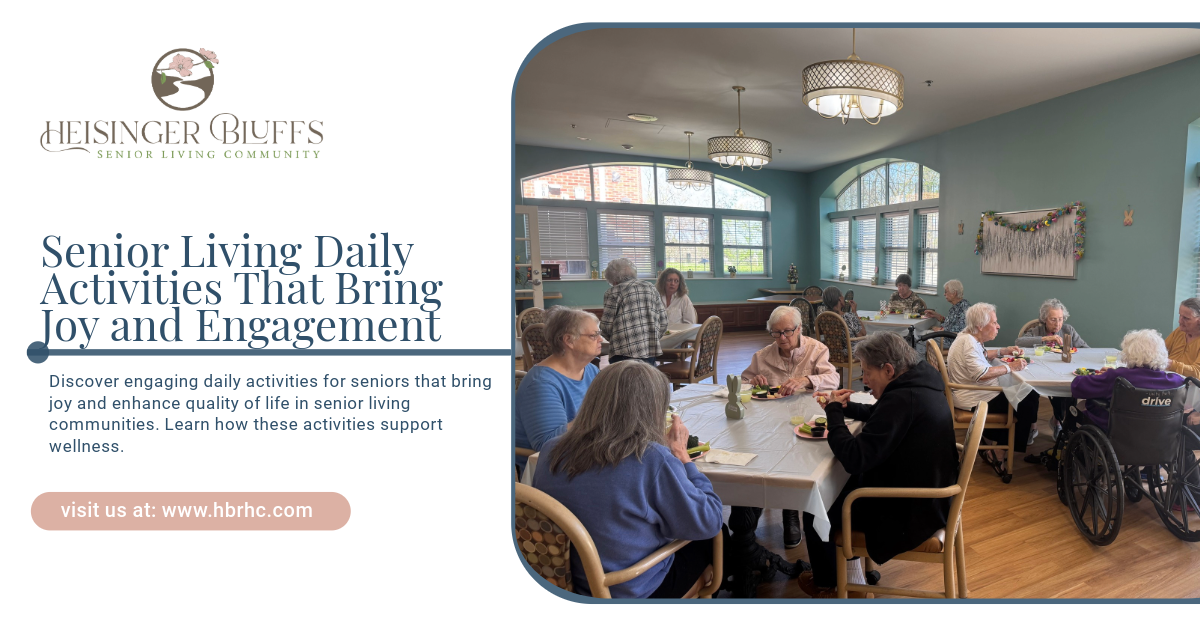Overcoming Social Isolation: The Power of Community Engagement for Seniors

For many seniors, the transition into retirement or aging often brings new challenges, one of the most significant being the risk of social isolation. The freedom of time and a lack of routine can lead to feelings of loneliness, depression, and even physical health decline. However, on the other hand, community engagement offers a powerful solution to this issue, providing numerous benefits that go beyond just companionship.
In this post, we will explore the differences between social isolation and community engagement, delve into the effects of both on senior well-being, and highlight practical steps to enhance social connections in later life.
Social Isolation in Seniors: A Growing Concern
Social isolation occurs when an individual has minimal social contacts or lacks regular interaction with others. For seniors, this can be caused by a variety of factors, including:
- Retirement: When a person leaves the workforce, they often lose the social interactions that came with their job. Without the routine of going to work or interacting with colleagues, it can be easy to slip into isolation.
- Health Issues: Physical challenges such as mobility issues, hearing loss, or chronic illness can limit a senior’s ability to leave the home or participate in social activities.
- Loss of a Spouse or Close Friends: The loss of a spouse or close social circle can leave seniors with fewer people to interact with, intensifying feelings of loneliness.
- Geographical Separation: Many seniors find themselves distanced from family members and friends due to relocation or the fact that children have moved away for work or other reasons.
The Negative Impact of Social Isolation
The effects of social isolation on seniors can be profound, affecting both mental and physical health. Some of the most common impacts include:
- Mental Health Decline: Loneliness is linked to anxiety and depression in older adults. Seniors who are isolated may also experience cognitive decline and have an increased risk of developing Alzheimer’s disease or other forms of dementia.
- Physical Health Risks: Research shows that socially isolated seniors tend to have a higher risk of heart disease, stroke, and even mortality. Without regular social interaction, seniors may also neglect their physical health, including exercise, nutrition, and doctor visits.
- Increased Stress: Isolation can cause stress, which can weaken the immune system and make it harder for seniors to manage chronic conditions.
- Loss of Purpose: For many seniors, social connections provide a sense of purpose and meaning. Without these connections, they may feel disconnected from the world and lose interest in activities they once enjoyed.
The Benefits of Community Engagement for Seniors
Community engagement offers a stark contrast to the negative effects of social isolation. By staying connected to a network of peers, seniors can experience significant improvements in both their mental and physical well-being. Some of the key benefits of community engagement include:
1. Improved Mental Health
Engaging in social activities can reduce feelings of loneliness, depression, and anxiety. Being part of a community helps seniors maintain a sense of belonging and purpose. This connection boosts self-esteem and emotional well-being, giving seniors a reason to look forward to each day. Whether it’s participating in group discussions, joining a club, or volunteering, regular social engagement is crucial for mental health.
2. Better Physical Health
Social interaction has been linked to a number of positive physical health outcomes. Engaging with others often encourages more physical activity, such as walking, dancing, or even just moving around to interact with friends. Studies also suggest that those who are more socially active tend to have better immune function, lower blood pressure, and a reduced risk of chronic conditions like obesity, diabetes, and cardiovascular disease.
3. Reduced Cognitive Decline
Engaging with others and participating in mentally stimulating activities can help seniors preserve cognitive function. Social activities that involve learning, conversation, or games can keep the brain active and sharp. These activities encourage critical thinking, problem-solving, and social interaction, all of which contribute to healthier brain function.
4. Increased Sense of Belonging
As people age, it’s easy to feel as though they no longer have a place in the world. However, being part of a community helps seniors maintain a sense of belonging and relevance. Whether it’s through group activities, volunteering, or simply connecting with neighbors, community engagement can provide seniors with meaningful relationships that enrich their lives.
5. Opportunities for Purposeful Activity
Community engagement offers seniors a chance to stay active and involved. This could be through volunteering, mentoring, participating in fitness classes, or attending social events. These purposeful activities not only keep seniors busy but also provide them with a sense of achievement and fulfillment.
Ways to Combat Social Isolation Through Community Engagement
There are several practical ways seniors can break free from isolation and become more involved in their communities. Here are some ideas to help seniors foster connections and embrace a more social lifestyle:
1. Join Local Clubs and Groups
Many communities offer clubs and groups designed specifically for seniors. These can include book clubs, gardening groups, art classes, and even fitness groups. Finding a group with shared interests provides a natural way to connect with others.
2. Volunteer in the Community
Volunteering offers seniors a chance to give back to their communities while also meeting new people. Whether helping at a food bank, tutoring children, or assisting at local events, volunteering creates social bonds and provides a sense of purpose.
3. Attend Social Events
From senior socials to holiday celebrations, attending community events is an excellent way to interact with others. Look for social gatherings in local parks, churches, or community centers. These events often feature music, food, and activities that encourage mingling.
4. Take Part in Exercise or Wellness Programs
Many senior living communities and local centers offer exercise programs designed specifically for older adults. From yoga and Pilates to walking clubs, staying physically active not only promotes better health but also provides opportunities for social interaction.
5. Stay Connected Virtually
For seniors who may have difficulty leaving home due to health reasons, virtual platforms provide an excellent alternative for staying connected. Video calls, social media, and online groups can offer ways to interact with family and friends, and even participate in virtual events or classes.
Addressing Barriers to Community Engagement
While community engagement is essential, there are often barriers that prevent seniors from fully participating. Some of these include:
- Health Issues: Chronic illnesses or mobility issues can make it difficult for seniors to participate in physical activities or leave their homes.
- Transportation Challenges: Lack of access to reliable transportation can prevent seniors from attending events or meeting with others.
- Fear of Social Stigma: Some seniors may feel embarrassed or ashamed about their age or health conditions, leading to social withdrawal.
- Limited Information: Seniors may not be aware of the opportunities available to them within their community.
Addressing these barriers involves providing resources, such as accessible transportation options, social programs that accommodate health needs, and information about local events. Encouraging seniors to speak openly about their challenges and offering solutions can also help them feel more comfortable engaging with the community.
Building Community Connections in Senior Living Communities
For seniors who choose to live in a senior living community, the opportunity for social engagement is often built into the environment. Senior living communities are designed to offer a balance of privacy and community, with a wide range of activities and social opportunities that promote interaction.
- Organized Social Activities: Most senior living communities organize events such as game nights, movie screenings, and holiday celebrations, ensuring there’s something for everyone to enjoy.
- Group Fitness and Wellness Programs: Regular exercise classes and wellness programs are typically offered, allowing residents to stay physically active while also engaging with others.
- On-Site Services and Amenities: Senior living communities often provide on-site amenities like libraries, cafes, and communal spaces, all of which encourage socializing and interaction.
Conclusion
Social isolation is a significant issue for many seniors, but it doesn’t have to be a reality. By actively engaging in their communities, seniors can combat loneliness, boost their mental and physical health, and lead more fulfilling lives. Community engagement offers a powerful solution that enhances overall well-being and gives seniors the opportunity to live purposefully and meaningfully. At Heisinger Bluffs, we understand the importance of fostering connections, which is why we prioritize creating a vibrant, supportive community for our residents.
Frequently Asked Questions
How can seniors overcome the challenges of social isolation?
Seniors can overcome isolation by joining local clubs, participating in volunteer work, attending social events, and engaging in exercise or wellness programs. Virtual connections can also help bridge the gap when mobility is an issue.
What are the physical benefits of community engagement for seniors?
Community engagement promotes physical health by encouraging regular activity, lowering the risk of chronic diseases, improving immune function, and even extending life expectancy.
How can senior living communities help reduce social isolation?
Senior living communities offer structured social activities, group fitness classes, and ample opportunities for residents to connect with others, reducing feelings of loneliness and promoting well-being.
Sources:
- https://www.nia.nih.gov/health/loneliness-and-social-isolation/loneliness-and-social-isolation-tips-staying-connected
- https://www.cdc.gov/healthy-aging/about/depression-aging.html
- https://pmc.ncbi.nlm.nih.gov/articles/PMC3150158/
- https://odphp.health.gov/myhealthfinder/health-conditions/obesity/stay-active-you-get-older-quick-tips
- https://www.harvardpilgrim.org/hapiguide/senior-brain-boosters-tips-for-maintaining-brain-health/











